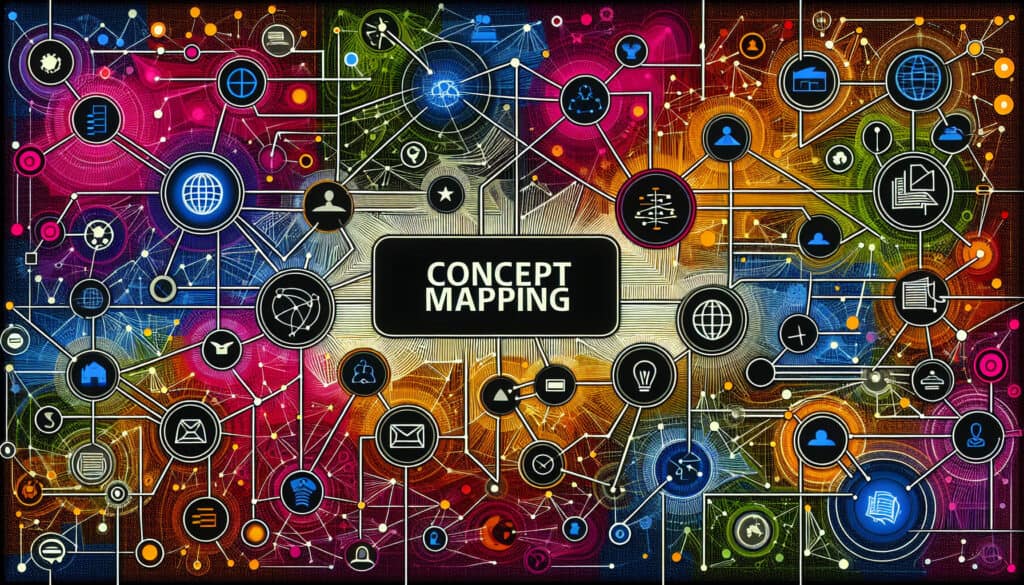A graphical tool for organizing and representing knowledge in the form of a diagram.
- 方法: 精益西格玛, 制造业
概念绘图

- 集思广益, 创造力, 设计思维, 构思, 交互设计, 解决问题的技巧, 系統建模語言(SysML), 以使用者為中心的設計
概念绘图
- 集思广益, 创造力, 设计思维, 构思, 交互设计, 解决问题的技巧, 系統建模語言(SysML), 以使用者為中心的設計
目标
如何使用
- It involves creating a visual map where nodes represent concepts and links represent the relationships between them. It is used for brainstorming, knowledge organization, and problem-solving.
优点
- Helps to visualize complex relationships and organize thoughts, promotes creative thinking and problem-solving, and serves as an effective communication and learning tool.
缺点
- Can become cluttered and difficult to read if there are too many concepts, the process can be time-consuming, and the representation can be subjective.
类别
- 构思, 解决问题, 产品设计
最适合:
- Visually organizing and representing concepts and their relationships to facilitate understanding and idea generation.
Concept Mapping proves valuable across various stages of product development and design, enabling teams to explore interconnected ideas and refine their focus. For instance, during the ideation phase, cross-functional teams can visually represent their thoughts around a new product or solution, enhancing collaborative efforts and preventing information silos. In sectors like healthcare, education, and software development, concept mapping facilitates the identification of user needs, system requirements, and design specifications. Participating in this process typically involves designers, engineers, product managers, and stakeholders who contribute diverse perspectives, enriching the map’s effectiveness. The methodology proves beneficial in workshops and brainstorming sessions, where participants can dynamically adapt the map as new ideas arise, ensuring that no significant concepts are overlooked. By using 颜色编码 and various shapes, teams can prioritize elements and elucidate relationships between aspects, making discussions more productive and focused. This visual representation serves not just as a tool for problem-solving but also as a foundation for creating documentation, training materials, and roadmaps, ensuring that all participants maintain a unified vision throughout the project’s lifecycle.
该方法的关键步骤
- Identify the central concept or problem to address.
- Brainstorm related concepts that connect to the central idea.
- Organize concepts hierarchically to reflect relationships.
- Create nodes for each identified concept.
- Establish links between nodes to denote relationships.
- Refine the map by adjusting concepts and connections for clarity.
- Utilize colors or symbols to differentiate types of relationships.
- Iterate on the map by inviting feedback and revising according to new insights.
专业提示
- Incorporate cross-disciplinary perspectives to enrich the mapping process and uncover novel relationships among concepts.
- Regularly revisit and revise maps as new information emerges, ensuring they reflect the evolving nature of projects and ideas.
- Utilize concept mapping software with collaborative features, enabling real-time input and fostering diverse viewpoints within teams.
历史背景
1828
1850
1854
1854
1911
1928
1950
1827
1848
1850
1854
1895
1914
1943
1970
(如果日期不详或不相关,例如 "流体力学",则对其显著出现的时间作了四舍五入的估计)。















相关文章
制造运营管理(MOM)
制造执行系统(MES)
生产控制计划
人工测试
手动搬运评估表 (MAC)
手动任务风险评估工具(ManTRA)